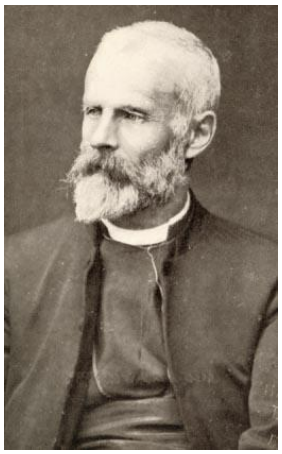
Alfred George Edwards, known as A. G. Edwards, was elected the first archbishop of the disestablished Church in Wales.

Campbell West-Watson was successively an Anglican suffragan bishop, diocesan bishop and archbishop over a 40-year period during the first half of the 20th century.

Thomas William Cook was the Anglican Bishop of Lewes for a brief period in the second quarter of the 20th century.
Leslie Edward Stradling was an Anglican bishop in three separate African dioceses during the mid-20th century.

Charles John Corfe was the inaugural Anglican Bishop in Korea from 1889 to 1904.
The Most Rev Charles Allen Seager (1872–1948) was Anglican Bishop of Ontario, then Huron and finally Metropolitan of Ontario in the 20th century.

Alan Francis Bright Rogers (1907–2003) was an Anglican bishop who held three different posts in an ecclesiastical career spanning over half a century.
Thomas Alfred Chapman (1867–1949) was an Anglican bishop in the first half of the twentieth century.
Ronald Norman Shapley was a Colonial Anglican Bishop in the Windward Islands from 1949 until 1962.
William George Hardie, CBE, was a long serving Anglican Bishop of Jamaica from 1931 until 1949; and for the last four of that time Archbishop of the West Indies.

John Charles Roper was an Anglican bishop in the Anglo-Catholic tradition in the first half of the 20th century.

John Sheepshanks was an English Anglican Bishop in the last decade of the 19th century and the first one of the 20th.

The Most Reverend William Marlborough Carter, (1850–1941) was an Anglican bishop and archbishop in South Africa.
Walter Godfrey Whittingham was a Church of England bishop.
David John Cashman (1912–1971) was an English prelate of the Roman Catholic Church. He served as Bishop of Arundel and Brighton from 1965 to 1971.
Herbert Mather (1840–1916) was an Anglican bishop in the last decades of the 19th century and the first part of the 20th.
Godfrey Philip Gower was the fifth Bishop of New Westminster and Metropolitan of British Columbia.
He was born on 5 December 1899, educated at Imperial College, London and St. John's College, University of Manitoba and ordained in 1931. He then held incumbencies in Camrose, Edmonton and Vancouver. He was elected Bishop of New Westminster in 1951 and Metropolitan of British Columbia in 1968, retiring from both posts in 1971. He died on 23 August 1992.
Frederick Herbert Du Vernet was the second Bishop of Caledonia and inaugural Metropolitan of British Columbia
Maurice Day was an Anglican bishop in the early 20th century.

St. John's (Shaughnessy) Memorial Church is an Anglican parish in the Shaughnessy neighborhood of Vancouver. Founded in 1925, the church is part of the Diocese of New Westminster in the Anglican Church of Canada. Once reported to be the largest Anglican church in Canada and a bastion of evangelicalism, most of the congregation and clergy left during the Anglican realignment and the church is today much smaller and aligned with the progressive wing of Canadian Anglicanism.









